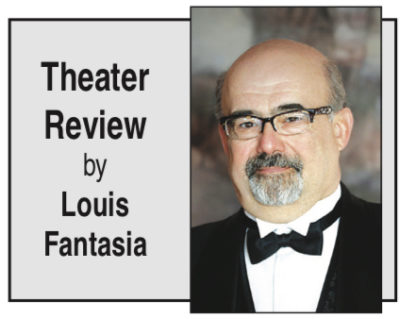Time to bring anger in streets to theaters?
 I had planned to focus this month’s column on summer Shakespeare festivals devastated by COVID-19. They are at great financial risk because their income is earned between May and September, with opportunity to make up ticket sales in the fall and winter. Theaters from the London Globe and Royal Shakespeare Company to our own local Shakespearean stalwarts — the Theatricum Botanicum in Topanga, the Griffith Park-based Independent Shakespeare Company, and the downtown Shakespeare Center of Los Angeles — have all been shuttered, resulting in pleas for funding.
I had planned to focus this month’s column on summer Shakespeare festivals devastated by COVID-19. They are at great financial risk because their income is earned between May and September, with opportunity to make up ticket sales in the fall and winter. Theaters from the London Globe and Royal Shakespeare Company to our own local Shakespearean stalwarts — the Theatricum Botanicum in Topanga, the Griffith Park-based Independent Shakespeare Company, and the downtown Shakespeare Center of Los Angeles — have all been shuttered, resulting in pleas for funding.
I wrote in May that, from my home, I could “hear the protestors in front of Mayor Garcetti’s residence” demanding the Mayor “open up” the city, referring to the stay-at-home orders then in effect. In June, there were, as we all know, other demonstrations, fraught with higher stakes. It makes writing about the loss of a summer night’s Shakespeare seem trivial, if not obscene.
In another Chronicle column, I listed various “plague-related” plays, from “Oedipus Rex” to Peter Barnes’ “Red Noses.” (I probably should have included Tony Kushner’s “Angels in America,” too.) But what are the plays that address the current outrage? The fire in the streets; the rage and anger we are all feeling, with our Black and brown fellow citizens feeling ever so much more intensely — and, let’s face it, physically.
After the 1992 Rodney King riots, Anna Deavere Smith’s topical, if somewhat over-wrought, “Twilight” held sway. Broadway and regional theater have since had plays such as Susan Lori Parks’ “Topdog/Underdog” (2001), “The Mxxxxxxxxxxx With a Hat” (2011) by Stephen Adly Guirgis, and Jeremy O’Harris’ “Slave Play” (which was on Broadway when the pandemic struck). Those plays all speak to the tensions in American race relations (as does Bruce Norris’ riff on “A Raisin in the Sun,” “Clybourne Park”). And, of course, there is the 10-play “Pittsburgh Cycle” by August Wilson, chronicling decades of African-American life.
But how many of these plays — not to mention the hundreds more that have been developed and workshopped in writers’ groups and regional theater labs — speak to the anger in the streets? May I venture to say almost none? The anger in the streets has been missing in the theater for nearly 50 years. Who really wants to upset season ticket holders, or patrons paying hundreds of dollars for a seat? Even “Hamilton’s” attempt to democratize mind-blowing ticket prices still involved getting people to the theater, and not theater to the people. (In a bow to corporatism, or populism, or both, “Hamilton” airs on Disney+ streaming July 3.)
We have to go back to the 1930s Federal Theater Project — which, it must be remembered, was investigated by the House Un-American Activities Committee for promoting racial integration and an anti-capitalist agenda — for the kind of theater I am looking for. In the 1960s and ’70s, the Living Theater, the Bread and Puppet Theater, the San Francisco Mime Troupe and others took to the streets to protest the Vietnam War and social injustice. Black writers such as Amiri Baraka (Leroy Jones), Adrienne Kennedy, Samm-Art Williams and Ntozake Shange found their voices on stage. American political theater was, again, worthy of the name. But what has happened to that political voice? Where is the political theater of today? It doesn’t exist. While there is a long list of complicated reasons, the short answer is people had to eat and theaters needed to pay the rent, so people took teaching jobs, or wrote for TV, etc. Most of even the best-intentioned theater (and theater training) today hardly rocks the boat, let alone the cradle (to borrow Mark Blitzstein’s title). It’s time to kick ourselves and our audiences out of our comfort zones and to blow the art form up!
By Louis Fantasia
Category: Entertainment
